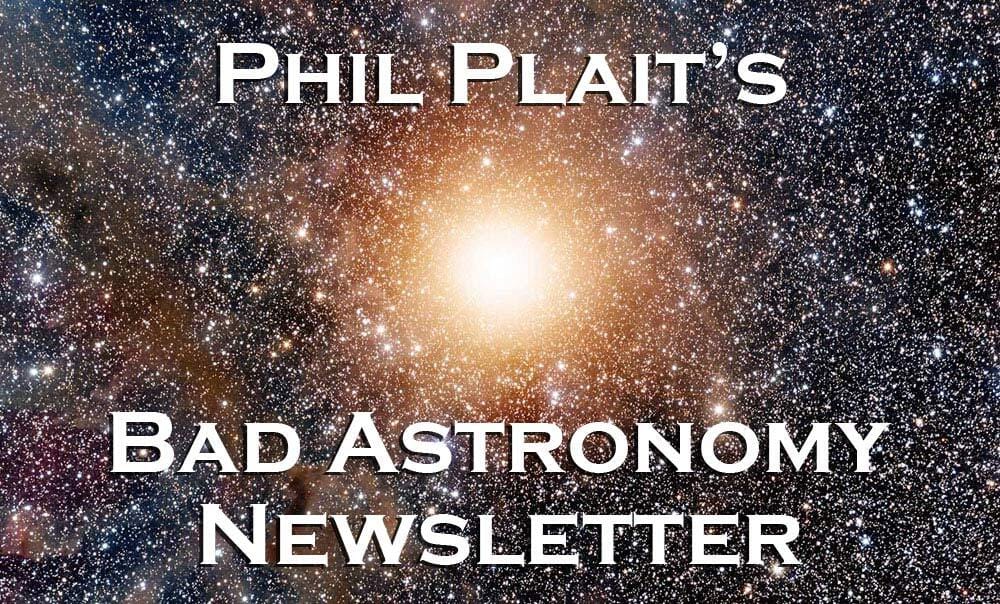- Bad Astronomy Newsletter
- Posts
- Spectacular colliding galaxies from Hubble and JWST
Spectacular colliding galaxies from Hubble and JWST
Views from both telescopes let us compare and contrast a cosmic collision
January 6, 2025 Issue #822
Shameless Self-Promotion
Where I’ll be doing things you can watch and listen to or read about
I got together with my old friend and fellow astronomer Seth Shostak from the SETI Institute to chat on his Big Picture Science podcast! We talked about big stories of 2024, including distant galaxies seen by JWST, the Mars Ingenuity helicopter’s final flight, and why the Small Magellanic Cloud may in fact be two galaxies and not just one.
Pic o’ the Letter
A cool or lovely or mind-bending astronomical image/video with a description so you can grok it
I love colliding galaxies, and I especially love it when I can see them in glorious detail in Hubble images. But I love it even more when I can see them in glorious different detail in JWST images, too!
Arp 107 is a pair of galaxies about 470 million light-years from Earth. One is a spiral, and the other is a much smaller compact elliptical galaxy. A long time ago, tens of millions of years or so, the smaller one shot through the bigger, creating an off-center collision that distorted the much bigger galaxy as they interacted gravitationally. What’s left is a mess, though a gorgeous one:

Arp 107 via Hubble and other observatories. Credit: ESA/Hubble & NASA, J. Dalcanton, Dark Energy Survey/DOE/FNAL/NOIRLab/NSF/AURA, SDSS
This image is actually only partly by Hubble; it’s a composite of visible light images (the kind of light we see) also taken by the Sloan Digital Sky Survey and the DECam on the 4-meter Victor M. Blanco telescope in Arizona. Most spiral galaxies have multiple arms, but this one (itself named UGC 5984) has one major arm wrapped all the way around the nucleus. It definitely looks distorted to me due to the collision, since the tail end looks straight instead of curving. The blue in the image is from very massive hot stars, no doubt born recently due to the collision collapsing countless clouds of gas to make zillions of stars.
You can also see tendrils connecting the two (the elliptical is called MCG+05-26-025). That’s typical in collisions as the gravity of each draws material away from the other. The elliptical has shells of material around it, which is unusual but not unheard of (a bigger example is NGC 474). How they form is ongoing work, but it’s likely due to material falling onto the galaxy from the other one. It could be the smaller ate a galaxy earlier to this collision, too.
Now look at the amazing JWST shot:

Arp 107 via JWST. Credit: NASA, ESA, CSA, STScI
Remember JWST sees light in the infrared, which is emitted by different kinds of objects than the kind of light we see. Here, we’re seeing dust in the spiral, grains of silicates (rocky material) and small carbon molecules called polycyclic aromatic hydrocarbons, or PAHs. Essentially, soot! These are made in massive dying stars like red supergiants (Betelgeuse, for example). These kinds of stars don’t live long, so dust is common in galaxies forming lots of stars, and as noted above we see from the visible light image that’s the case. Dust is seen in the far infrared, and captured here by JWST’s MIRI camera, displayed as red.
The blue is from JWST’s NIRCAM, and shows shorter wavelengths. This is likely from old stars that would appear red to our eyes (note in the other image the elliptical appears more reddish-yellow). Ellipticals tend not to have gas and dust in them, which is why we don’t see them in the JWST image (they would glow red in the JWST image).
Colors are confusing when you’re looking at different wavelength regimes, I know. I have to concentrate to keep them straight sometimes, and I’m used to this!
In the JWST image you can see the center of the spiral is extremely bright, and in the separate MIRI image it’s point-like and extremely bright. That’s because UGC 5984 is a Seyfert galaxy, one with a supermassive black hole in its core that’s actively feeding on gas and dust dumped on it from the disturbance of the collision. They’re similar to quasars. There’s usually a lot of dust in the core, forming a huge donut around the black hole. This absorbs the high-energy radiation from the matter falling into the hole, heats up and then re-radiates that as infrared, which is why it’s so bright in the MIRI image.
It’s amazing what you can glean from images like these just by looking at them. Of course, analyzing the data scientifically and in detail yields a lot more. We can find the star formation rate, the gas to dust ratio, the luminosity of the material swirling around black hole, the velocities of the stars (if spectra are taken, at least), and much more. All of this paints a complex and subtle picture of the chaos going on during and after a galactic collision.
Remember, there’s a 50/50 chance the Milky Way will collide with the Andromeda Galaxy in a few billion years. Both these galaxies are bigger than either making up Arp 107, so the maelstrom will be something. It’d be fun to see that up close, but alas, we have to be satisfied with the devastatingly spectacular images we can see from our huge telescopes on the ground and in space.
Et alia
You can email me at [email protected] (though replies can take a while), and all my social media outlets are gathered together at about.me. Also, if you don’t already, please subscribe to this newsletter! And feel free to tell a friend or nine, too. Thanks!


Reply